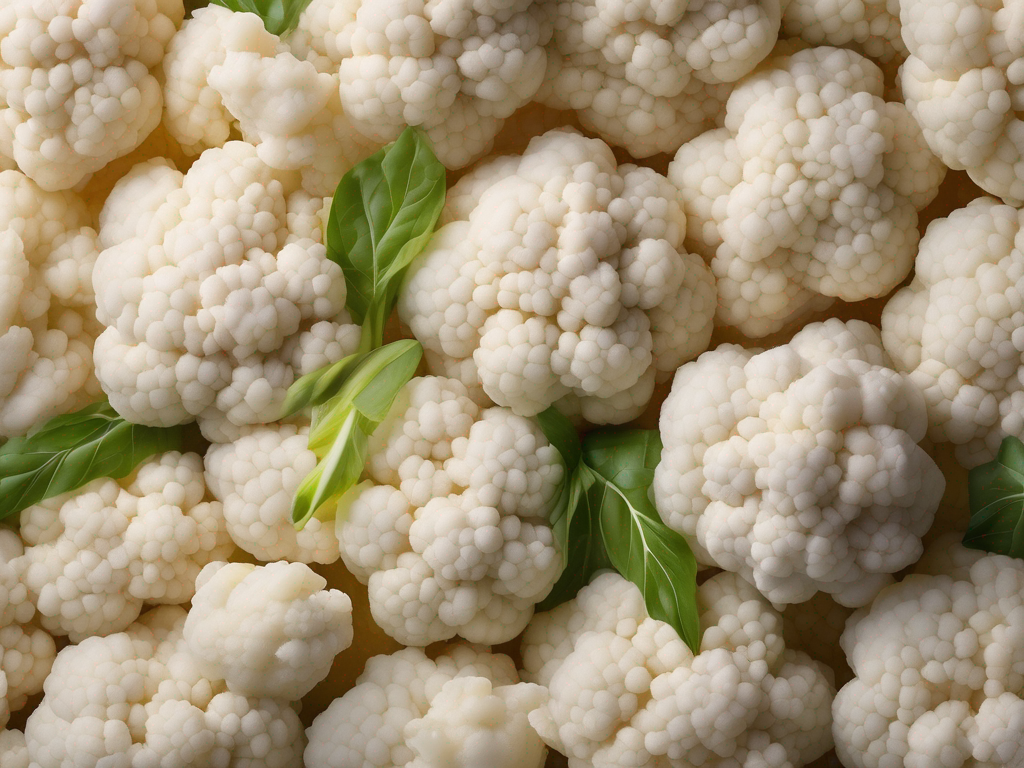
The Ultimate Guide to Properly Storing Frozen Cauliflower Rice
Get Your Free Food Safety Cheat Sheet
30 most common foods with instant answers. Print it and stick it on your fridge—completely free!
The Ultimate Guide to Properly Storing Frozen Cauliflower Rice
In recent years, frozen cauliflower rice has become a popular staple in many households due to its versatility and convenience. Whether you buy it in bulk or prepare it at home, proper storage is essential to maintain its quality and taste. In this comprehensive guide, we will explore the best practices for storing frozen cauliflower rice in the freezer to ensure it stays fresh and safe for consumption. (Frozen cauliflower rice)
Why Proper Storage Matters
Properly storing frozen cauliflower rice is crucial for several reasons:
-
Maintaining Freshness: Storing cauliflower rice correctly helps retain its flavor, texture, and nutritional value.
-
Preventing Freezer Burn: Improper storage can lead to freezer burn, which affects the taste and quality of the cauliflower rice.
-
Food Safety: Following correct storage guidelines minimizes the risk of bacterial contamination and foodborne illnesses.
Choosing the Right Packaging
When it comes to storing frozen cauliflower rice, the right packaging can make a significant difference in maintaining its quality. Here are some tips for choosing the right packaging:
Tips for Packaging:
- Use airtight containers or freezer bags to prevent freezer burn and contamination.
- Ensure the packaging is labeled with the date of freezing to track freshness.
- Consider portioning the cauliflower rice into smaller servings for easier meal planning.
Proper Freezing Techniques
Properly freezing cauliflower rice is crucial to preserving its taste and texture. Follow these steps for optimal freezing:
Freezing Tips:
-
Blanching: If you are preparing fresh cauliflower rice for freezing, blanching it before freezing can help preserve its color and nutrients.
-
Cooling: Allow the cauliflower rice to cool completely before transferring it to the freezer to prevent condensation and ice crystals.
-
Avoid Overfilling: Leave some room in the packaging for the cauliflower rice to expand as it freezes.
Storage Guidelines
Once you have properly packaged and frozen the cauliflower rice, it's essential to store it correctly in the freezer. Follow these guidelines for safe storage:
Storage Tips:
- Place the packaged cauliflower rice in the coldest part of the freezer to maintain a consistent temperature.
- Avoid storing the cauliflower rice near the freezer door to prevent temperature fluctuations.
- Use a separate storage area for raw cauliflower rice to prevent cross-contamination with other foods.
Thawing and Reheating
When you're ready to use the frozen cauliflower rice, proper thawing and reheating techniques are essential to maintain its quality and safety:
Thawing and Reheating Tips:
-
Thawing: Thaw the cauliflower rice in the refrigerator overnight for best results. Avoid thawing at room temperature to prevent bacterial growth.
-
Reheating: Reheat the cauliflower rice thoroughly to an internal temperature of 165°F (74°C) to kill any bacteria present.
Conclusion
Properly storing frozen cauliflower rice is essential for maintaining its quality, taste, and safety. By following the guidelines outlined in this guide, you can enjoy delicious and nutritious cauliflower rice dishes with peace of mind. Remember to choose the right packaging, follow proper freezing techniques, store the cauliflower rice correctly in the freezer, and use safe thawing and reheating methods for the best results.
For more information on [frozen cauliflower rice](/food/frozen cauliflower rice) and other food safety tips, stay tuned for our upcoming blog posts! (Frozen cauliflower rice)
Related Posts
Here are some other articles you might find helpful:
Authoritative Food Safety References
These agencies and university labs inform every tip and health precaution we publish.
USDA FoodKeeper – Cold Storage Guidelines
Official refrigerator, freezer, and pantry timelines maintained by the U.S. Department of Agriculture.
Visit USDA FoodKeeperFDA Produce Safety Rule & Grower Guidance
Field-to-fridge handling practices that prevent contamination of fruits, vegetables, and leafy greens.
Visit FDA Produce SafetyCDC Foodborne Illness Prevention Hub
Surveillance-backed guidance on pathogens, symptoms, and steps to reduce foodborne illness risk.
Visit CDC Food SafetyUC Davis Postharvest Technology Center
University research detailing optimal storage atmospheres for produce after harvest.
Visit UC Davis PostharvestPenn State Extension – Home Food Preservation & Safety
Peer-reviewed extension bulletins on safe canning, chilling, and reheating practices.
Visit Penn State ExtensionGet Your Free Food Safety Cheat Sheet
30 most common foods with instant answers. Print it and stick it on your fridge—completely free! Want more? Upgrade to the complete guide with 70+ foods.
Scan your food directly and get instant safety info using our AI-powered camera feature.